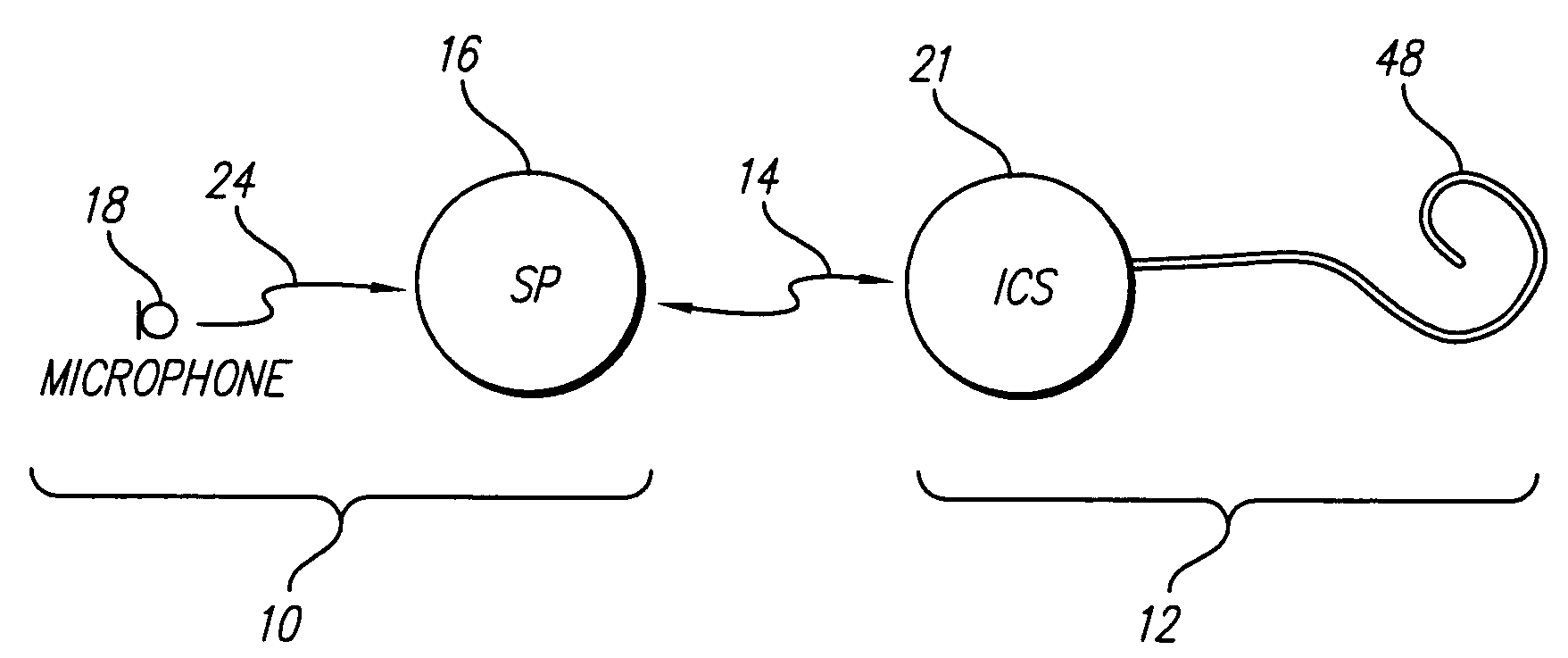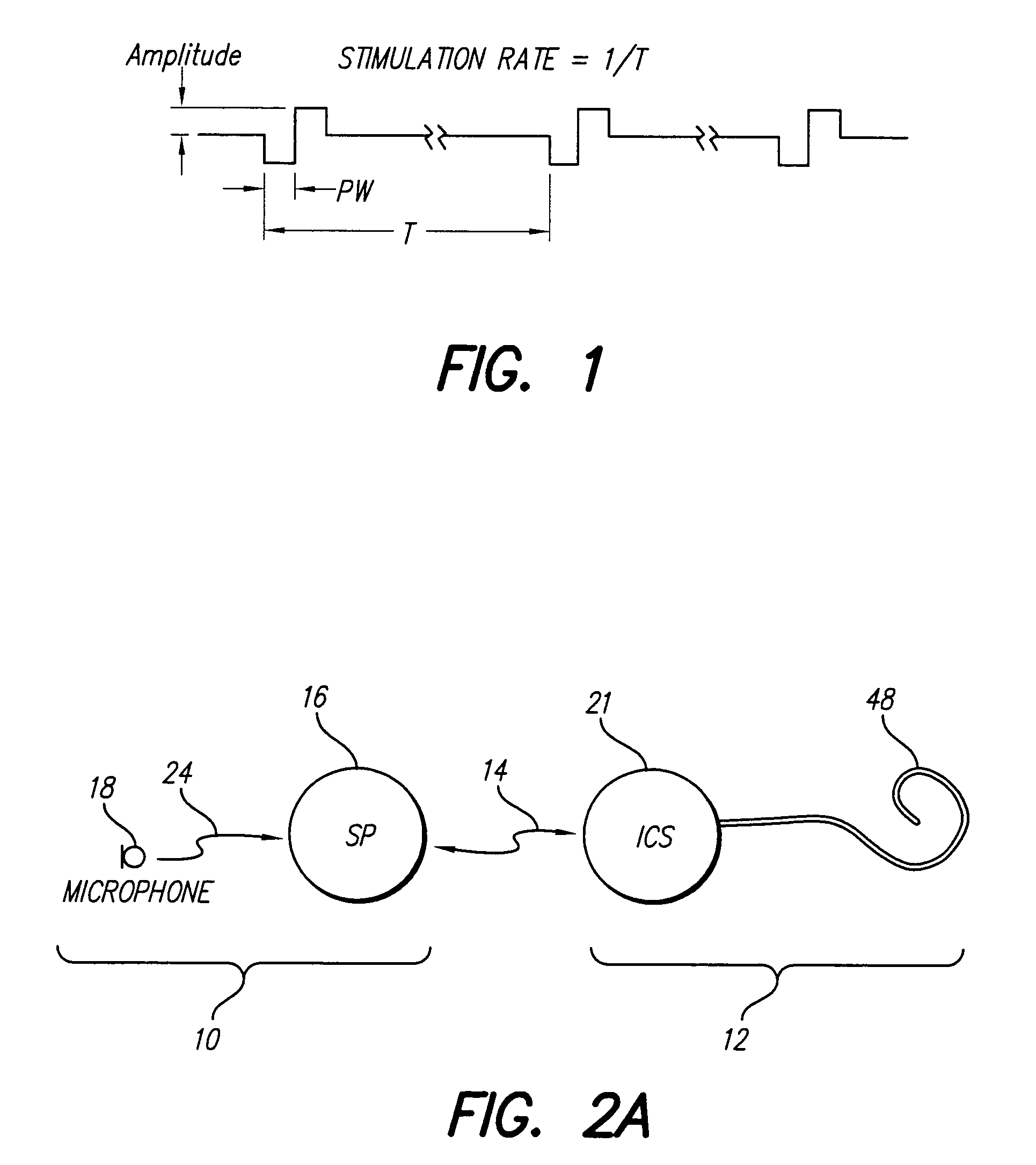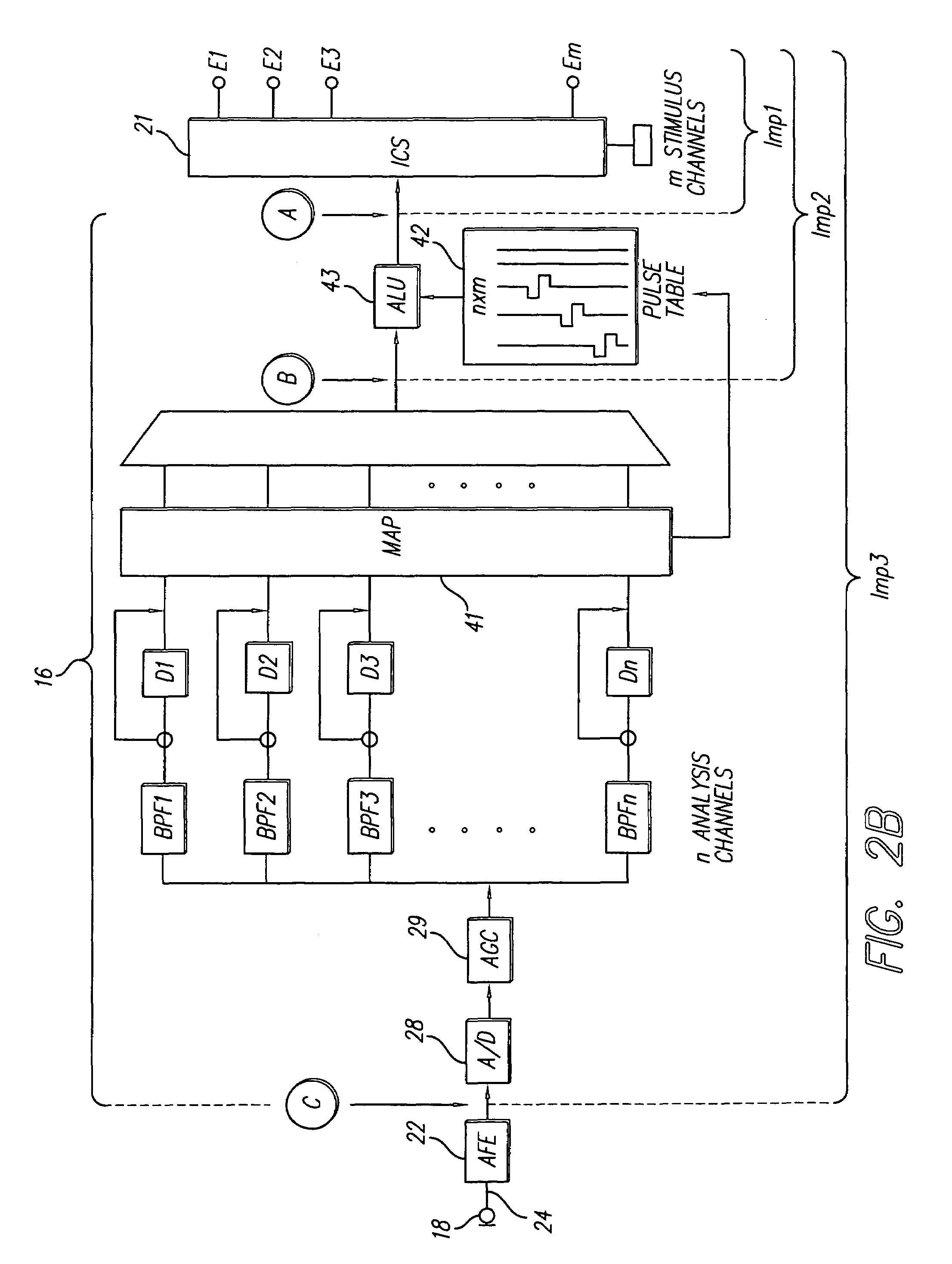Optimizing pitch and other speech stimuli allocation in a cochlear implant
a cochlear implant and speech stimuli technology, applied in the field of optimizing pitch and other speech stimuli allocation in cochlear implants, can solve the problems of inconvenient placement of electrodes, unfavorable use of vowel sounds, etc., and achieve the effect of improving pitch allocation, and improving user's ability to perceive quality sounds
- Summary
- Abstract
- Description
- Claims
- Application Information
AI Technical Summary
Benefits of technology
Problems solved by technology
Method used
Image
Examples
Embodiment Construction
[0021]The following description is of the best mode presently contemplated for carrying out the invention. This description is not to be taken in a limiting sense, but is made merely for the purpose of describing the general principles of the invention. The scope of the invention should be determined with reference to the claims.
[0022]The present invention, as described below, relates to fitting a cochlear implant to the unique perception attributes of a particular user. A key portion of a fitting procedure relates to mapping the locations within the cochlea where signals of different frequencies should be applied. The present invention provides a unique technique for use as part of a fitting procedure wherein a known (or readily perceivable) frequency relationship between a reference signal and a probe signal is applied to different locations within the cochlea, and the location at which the probe signal is applied within the cochlea relative to the reference signal is adjusted, us...
PUM
 Login to View More
Login to View More Abstract
Description
Claims
Application Information
 Login to View More
Login to View More - R&D
- Intellectual Property
- Life Sciences
- Materials
- Tech Scout
- Unparalleled Data Quality
- Higher Quality Content
- 60% Fewer Hallucinations
Browse by: Latest US Patents, China's latest patents, Technical Efficacy Thesaurus, Application Domain, Technology Topic, Popular Technical Reports.
© 2025 PatSnap. All rights reserved.Legal|Privacy policy|Modern Slavery Act Transparency Statement|Sitemap|About US| Contact US: help@patsnap.com



